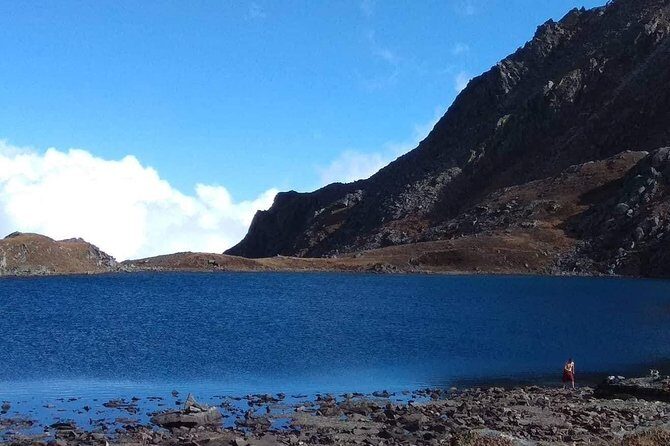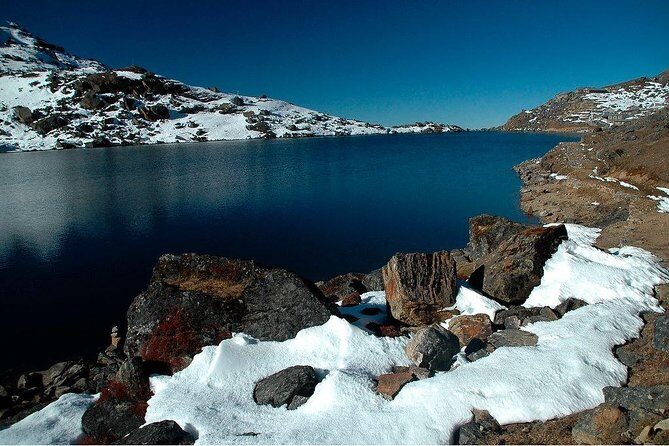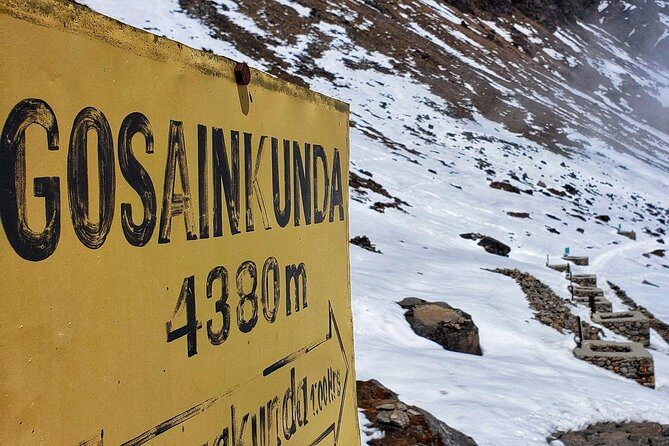Physical Address
304 North Cardinal St.
Dorchester Center, MA 02124
Physical Address
304 North Cardinal St.
Dorchester Center, MA 02124

Experience Nepal’s stunning Himalayan landscapes and spiritual sites on the 14-day Langtang Gosainkunda Trek, blending adventure, culture, and breathtaking views.
Embarking on the Langtang Gosainkunda Trek offers more than just a physical challenge — it’s a journey through some of Nepal’s most stunning scenery and culturally rich villages. This 14-day trek is designed for travelers who want a balanced mix of adventure, spiritual exploration, and authentic local culture. From snow-capped peaks to sacred lakes, you’ll encounter a variety of landscapes and traditions that truly showcase Nepal’s diverse beauty.
What really makes this trek stand out is its scientifically designed itinerary, ensuring you get the most out of each day without risking altitude sickness or exhaustion. The experience is also enriched by the chance to explore areas affected by the 2015 earthquake, giving a poignant insight into Nepal’s resilience. Plus, with pickup and mobile tickets included, logistics are simplified for travelers eager to focus on the journey.
A potential consideration is that this is a physically demanding trip — moderate fitness is recommended as the elevation gains and uneven terrain require stamina and acclimatization. It’s ideal for those seeking a meaningful trekking adventure rather than a leisurely walk. If you’re someone who loves culture paired with Himalayan vistas, this trek is likely to be right up your alley.
This trek suits adventure lovers, spiritual seekers, and those interested in authentic Himalayan experiences who are prepared for a physically active journey through Nepal’s spectacular landscapes.


Outdoor enthusiasts can explore more Kathmandu trails with these hiking options
Your adventure kicks off in Kathmandu, where the scenic drive to Syabrubesi sets the tone for what’s to come. The route is particularly compelling on a clear morning: you’ll get sweeping views of Manaslu, Annapurna, and Ganesh Himal. The winding mountain road adds to the thrill, with every bend revealing more of Nepal’s rugged beauty. Syabrubesi acts as the gateway to the Langtang region and is a traditional starting point that balances accessibility with authentic mountain village life.
The trek begins in earnest along the Langtang Khola riverbank. For the first few days, expect lush forests of oak and rhododendron, which burst into color in season. We loved the way the trail gently ascended and descended, offering constant opportunities to take photos of the verdant surroundings and waterfalls. Many reviewers mention the peacefulness of these forested sections — a perfect escape from urban noise and a chance to reconnect with nature.
As you climb towards Lama Hotel, you’ll notice the landscape shifting subtly, with mountain views becoming clearer. This part of the trek is relatively gentle but still rewarding. The visit to Langtang Village, which was affected by the 2015 earthquake, is particularly poignant. Walking through the village, you’ll see how locals have rebuilt their homes and temples, offering insight into their resilience.
The ascent continues to Kyangjin Gompa, a significant religious site. Here, you’ll find a monastery, prayer wheels, and chortens, all set against a dramatic mountain backdrop. The Tibetan-style architecture and peaceful atmosphere make this a highlight. The visit also includes exploring the surrounding hills, with views of towering peaks like Langtang Lirung. This is a great spot to soak in the Himalayan grandeur and reflect on the journey so far.
One of the most memorable parts of the trek is the day-long hike to Tserko Ri. Starting early, you’ll pass yak pastures and alpine meadows, leading to the summit at 4,984 meters. The sunrise view from Tserko Ri is often described as “extraordinary,” with panoramic vistas of the Himalayas including peaks like Langtang, Ganesh, and, on clear days, even Everest. Returning to Kyangjin Gompa, you’ll be treated to a visit to the monastery and some time to enjoy the mountain serenity.
Descending back down through forested trails, the route takes you through Tamang villages and lush landscapes. The journey to Gosaikunda Lake begins with a gradual ascent, but you’ll want to take it slow, allowing your body to adjust to the increasing altitude. The lake is sacred, especially for Hindu pilgrims, and the surrounding mountains add to its spiritual atmosphere.
The ascent to Laurebina Pass (4,610 meters) is challenging but rewarding. The trail is marked with cairns and passes several small lakes, each reflecting the towering peaks. The pass provides a gateway to the Helambu region and stunning views of the surrounding ranges. From here, downhill walking through forests brings you to Melamchi, a charming town and a peaceful retreat before returning to Kathmandu.
The trek continues through traditional Sherpa villages like Tarkeghyang and Sermathang, where you’ll enjoy stunning mountain vistas, local hospitality, and cultural sights like monasteries and mani walls. These villages offer a taste of authentic Himalayan life and are less touristy, providing a genuine cultural experience.
From Melamchi Bazaar, a scenic drive back to Kathmandu wraps up the journey. The farewell dinner offers a chance to reflect on your accomplishments and share stories with fellow travelers. Many reviewers appreciate the well-organized logistics and the opportunity to disconnect from daily life while reconnecting with nature and spirituality.
Transportation & Logistics: The journey begins with a morning pickup at Kathmandu’s Tribhuvan Airport, making arrival straightforward. The drive to Syabrubesi is on a winding mountain road, which can be bumpy but offers fantastic views. During the trek, transportation is primarily on foot, with logistics handled by the tour operator, including permits and accommodations.
Group Size & Support: As a private tour, your group will be small and personalized. Guides are experienced, familiar with local culture, and attentive to safety, especially considering altitude changes. Many reviews highlight the professionalism and friendliness of the guides, making the trek both safe and enjoyable.
Meals & Accommodation: Meals are included for all 14 days — breakfast, lunch, and dinner — typically served in guesthouses or mountain lodges. Expect hearty, filling food that provides the energy needed for trekking. Accommodation varies from simple guesthouses to more comfortable lodges at higher altitudes.
Physical Demands: The trek requires moderate physical fitness, with some days involving significant uphill walks and altitude gains. You will be trekking around 4–7 hours daily, with some challenging sections crossing high passes. Proper acclimatization days and gradual elevation gain help reduce the risk of altitude sickness.
Cost & Value: At $995 per person, the package is competitive considering it covers permits, meals, accommodations, and transfers. The inclusion of logistics support and guided expertise enhances value, making it accessible for those seeking a comprehensive Himalayan experience without hidden costs.

Travelers with previous reviews mention the balance of cultural and natural sights, from monasteries and prayer wheels to Himalayan panoramas. The visit to Gosaikunda Lake, especially during Janai Purnima, is noted for its spiritual significance, with many pilgrims and trekkers sharing their awe at the pristine lakes and mountain vistas. The trek passes through Tamang villages, giving a glimpse into indigenous Himalayan communities and their traditions.
The scenery is often described as “breathtaking,” with reviewers often highlighting the sublime sunrise views from Tserko Ri or the serene lakes around Laurebina Pass. Meanwhile, the route also offers quieter moments in less crowded villages, making it ideal for travelers who want both adventure and culture.
This trek is perfect for adventure lovers who enjoy physical activity and want to experience Nepal’s Himalayas beyond the usual routes. It also appeals to those interested in spiritual and cultural exploration, thanks to visits to monasteries, holy lakes, and sacred sites. The inclusion of acclimatization and scenic highlights makes it suitable for travelers with moderate fitness levels prepared for several days of trekking at high altitude.
If you’re looking for a comprehensive, well-supported trek that delivers both stunning mountain landscapes and authentic cultural encounters, this itinerary offers compelling value. It’s an excellent choice for those who want a meaningful Himalayan journey with expert guides and minimal logistical stress.
What is included in the price?
The $995 fee covers all necessary paperwork, trekking permits, meals (breakfast, lunch, dinner) for 14 days, and logistical support like transfers and accommodations.
Do I need special equipment?
While the tour operator provides an equipment list, you’ll want sturdy trekking shoes, layered clothing for changing weather, and essentials like a water bottle, sun protection, and a light sleeping bag for higher altitudes.
Is this trek suitable for beginners?
The trek requires moderate fitness and a willingness to walk several hours daily. It’s best suited for travelers with some trekking experience or good physical fitness, especially because of the altitude gains.
How does the altitude affect the trek?
You’ll reach elevations up to 4,380 meters at Gosaikunda Lake and 4,610 meters at Laurebina Pass. Proper acclimatization days and slow ascent help prevent altitude sickness, but travelers should be prepared for some physical strain.
Can I customize the itinerary?
Since this is a private tour, there’s room for personalized adjustments, such as extra days for acclimatization or exploring local villages in more depth.
What kind of accommodations can I expect?
Guesthouses and mountain lodges, varying in comfort. At higher elevations, expect basic but clean rooms with shared facilities.
Are vegetarian options available?
Yes, most meals include vegetarian dishes, common in Nepalese cuisine, and special dietary requests can usually be accommodated.
How is the weather?
Weather varies with altitude and season but expect cool to cold temperatures, especially in the mornings and evenings. Clear skies are common in the dry season (autumn and spring).
What’s the best time to do this trek?
The most popular seasons are spring (March-May) and autumn (September-November), when weather is stable and views are clearest.
Overall, the Langtang Gosainkunda Trek offers an outstanding balance of natural beauty, cultural insight, and physical challenge. If you’re eager to experience Nepal’s Himalayas with an experienced guide, this itinerary provides an enriching adventure that’s worth every step.